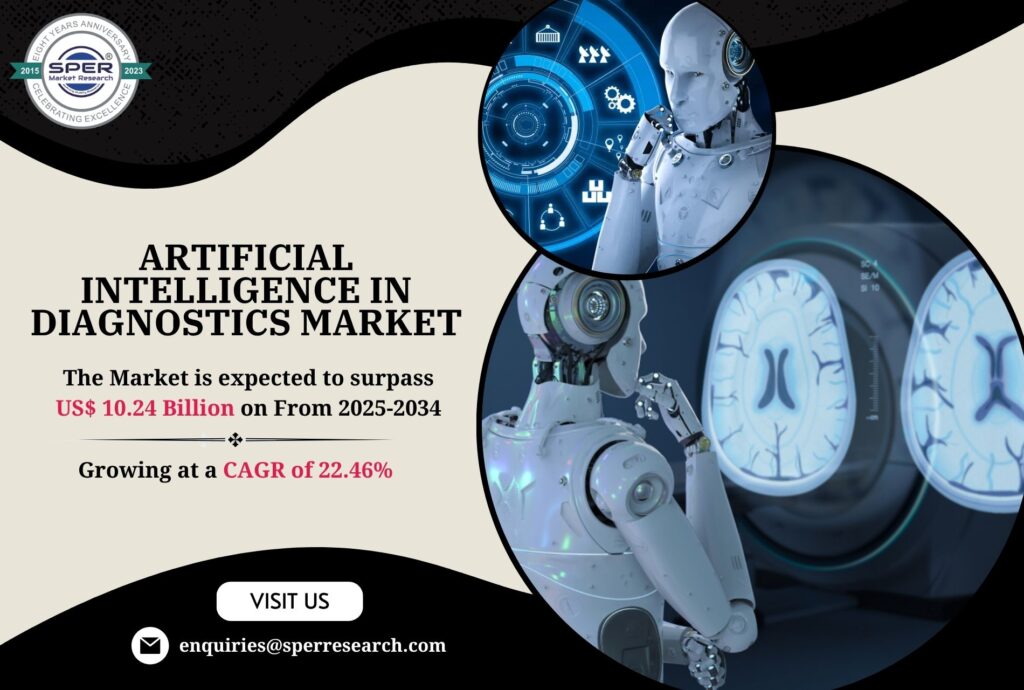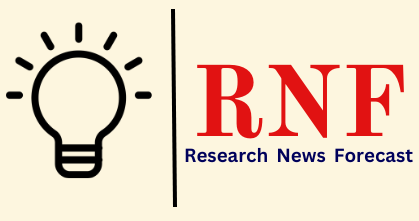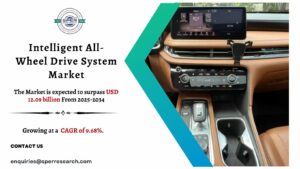Artificial Intelligence in Diagnostics Market Future Growth 2034

The incorporation of artificial intelligence (AI) into diagnostic procedures represents a revolutionary advancement in the healthcare sector. It employs cutting-edge technologies, including machine learning (ML), deep learning, and natural language processing (NLP), to analyze vast quantities of medical data, encompassing imaging scans, patient histories, laboratory findings, and genetic information. AI swiftly processes large datasets, which considerably diminishes the time needed for diagnostic evaluations. Furthermore, it identifies early indicators of diseases, such as cancer, heart conditions, and neurological disorders, thus enabling timely interventions and enhancing patient outcomes.
According to SPER Market Research, ‘Global Artificial Intelligence in Diagnostics Market Size- By Component, By Application, By End-User – Regional Outlook, Competitive Strategies and Segment Forecast to 2034’ state that the Global Artificial Intelligence in Diagnostics Market is predicted to reach 10.24 billion by 2034 with a CAGR of 22.46%.
DRIVERS:
The rising prevalence of chronic diseases has markedly escalated the demand for advanced AI-driven diagnostic solutions aimed at regular monitoring and effective disease management. Chronic conditions such as cardiovascular diseases, respiratory disorders, diabetes, and cancer require precise and timely detection to facilitate tailored interventions. Innovations in AI-enhanced imaging diagnostics play a crucial role in analyzing extensive datasets, thereby serving as a vital tool for delivering early medical intervention for effective disease management. Furthermore, the worldwide deficit of healthcare professionals, such as radiologists and pathologists, has heightened the dependence on artificial intelligence to effectively handle workloads
Download the Detailed Analysis in PDF format, Here
RESTRAINTS:
Despite the fact that artificial intelligence (AI) signifies the future, its implementation within the medical field remains prohibitively expensive. The considerable expenses involved in procurement and the substantial capital needed hinder hospitals from upgrading to these sophisticated systems. Institutions, including hospitals, face challenges in securing the essential investment necessary for AI integration. A significant portion of the costs related to the development and adoption of AI-driven products is ultimately passed on to patients, largely due to insufficient government funding in these sectors. This situation exacerbates expenses and places additional burdens on patients, making it increasingly difficult for them to afford even basic diagnoses, thereby severely restricting the growth of the AI in diagnostic market.
In 2024, North America emerged as the leading region in the AI in diagnostics market. Specifically, the U.S. is pioneering the adoption of advanced healthcare technologies. Healthcare providers in this region are actively seeking to integrate AI-powered diagnostic tools to enhance accuracy, minimize diagnostic errors, and improve patient outcomes. This extensive adoption is driven by a robust commitment to technological advancement and a comprehensive healthcare framework. Some of the key market players are Aidoc, AliveCor Inc, Digital Diagnostics, Inc, Enlitic, IBM Corporation, Imagen Technologies, NVIDIA Corporation, and others.
For More Information, refer to below link: –
Artificial Intelligence in Diagnostics Market Growth
Related Reports:
USA Home Healthcare Market Size
Japan Cancer Vaccines Market Size
Follow Us –
LinkedIn | Instagram | Facebook | Twitter
Contact Us:
Sara Lopes, Business Consultant — USA
SPER Market Research
enquiries@sperresearch.com
+1–347–460–2899





